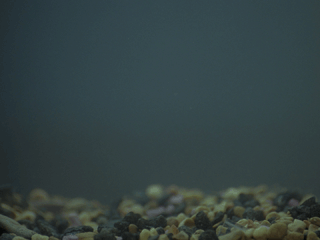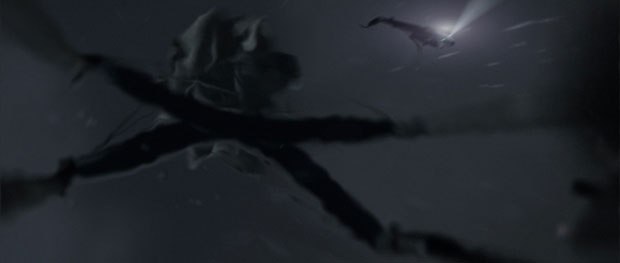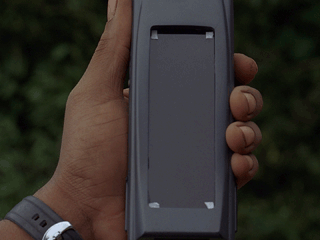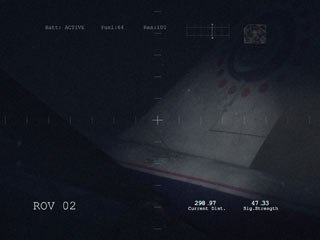VFX shots in the first half of the strike-interrupted fourth season of Lost played an important -- but supporting -- role. Karen Raugust gets the scoop from VFX Supervisor Mitch Suskin on the abbreviated season.
Mitch Suskin, the new vfx supervisor on Lost, was able to complete the first eight episodes of Season 4 before the WGA strike halted production. "The strike has thrown a crimp in things," he suggests. The initial eight episodes were meant to lay the groundwork for the final eight of the originally planned 16-episode season; the second part has now been abbreviated to five additional episodes, for a total of 13.
Since the first half of the series was primarily about building a foundation for what was to come, there were not a lot of creatures or other new vfx designs. "It was mostly transitioning Hawaii to whatever we needed it to be," Suskin explains, noting that several scenes took place in locations such as Los Angeles, Berlin or the desert. "It's about making the most of Oahu, and removing Oahu when we needed to. In the first half of the season, vfx was playing a supporting role."
The lack of showy creatures did not mean the vfx crew was not busy, however. "It was mostly the invisible type of vfx," says Suskin. Viewers probably were not aware that underwater scenes or shots of Faraday parachuting included vfx shots, for example, or that the satellite phone or GPS tracking devices that play a central role in the series are almost all vfx.
"Whenever you see that [GPS device], it's a block of wood, basically," Suskin adds. In the beginning, the producers didn't realize the device would be used so much, so they didn't build a prop, using vfx to fill in the backlit screen and other details.
These shots can be difficult to pull off. "The things that you don't see are the biggest challenge sometimes," Suskin points out. "When viewers are looking at a smoke monster, they want to believe it, but they know it's not real, and they've never seen one before. But when you want it 100% real [as with the GPS device] and not let the audience know you've tampered with the shot, that's more of a challenge."
In one close-up, a toy airplane representing Flight 815 was falling through the water in an aquarium. The initial idea was to use a prop. "But it's impossible to get a toy plane to spiral the way you want it to," Suskin insists. He received a call from the set saying they needed help with the scene. They shot a clean plate and the vfx team was able to create the animation for the spiraling plane, even with the gravel moving slightly as it touched down. And all this was done on short notice.
One bit of trivia for Lost watchers: The toy plane was originally a Lockheed L-1011, a three-engine plane, which mirrored the make of the plane that was to be Flight 815 as it crashed on the island. However, early on in the production, a decision had been made to change the plane from an L-1011, which is an older-model aircraft, to a two-engine Boeing 777. The vfx team did its best to alter the plane so it would be the right model, but the result is a bit of a hybrid.
That points up something that's important in vfx when doing a cult show such as Lost, where loyal viewers spend a lot of time trying to interpret every detail. "Everything has a meaning, so we have to be careful," Suskin suggests. "We need to keep the facts straight and the world of Lost consistent."
Evolving Technology
Suskin, who has been on the show's vfx team off and on since the pilot and supervised the two-hour Season 3 finale as well as Season 4, reports that no new tools or technologies have been used to create the vfx so far this year. Most of the team has been on the show since the beginning, and the tools have remained essentially the same.
Suskin says he and the crew will consider new tools or techniques when a desired effect "is cooler, faster, bigger, better than we've done before," citing new creatures or fluid dynamics as examples. But about 80% of the work so far this year has been compositing, which is done on Combustion at Seven Crows Visual Effects, which also does rotoscoping. Matte painting is done by BlackPool Studios on Photoshop and After Effects and 3D animation by Eden FX on LightWave. QuickTime is used to create a rough inital edit.
While new tools haven't been used for the visual effects themselves this season, they are being employed to improve the process. "We're using a lot more technology this year for communication," Suskin offers. Since the 16-episode original season was relatively short, Suskin had a decision to make about whether to be based in Hawaii or California. For a longer season, he would have relocated to Hawaii, but with the shorter season he decided to travel back and forth.
Suskin reports that collaborative software and virtual whiteboards are maturing and becoming more workable. By using these, it's almost like the team is together, except for the time difference, he says. "That helps a lot when you're 2,000 miles away." Instead of pushing files, the team can chat, look at scenes together and make notes.
Better technology also has helped make the production more flexible, allowing more shots and more sophisticated vfx to be created on short notice during post-production. The toy airplane shot mentioned above, for example, may never have been tried a few years ago, but this season the team was able to accommodate the request, producing a high-quality shot and fitting it into the schedule. In fact, several times this season the vfx crew has been able to accomplish last-minute alterations, such as changing the timing of a scene, adding a matte painting, animating critters that were not originally in the shot or even creating the shattering glass and water of a bursting aquarium. "It's not as much of a frightening change of plans as it would've been a few years ago," Suskin adds.
Technology has also improved the quality of the work and expanded the range of possibilities. For example, boujou is getting better with each version, allowing more camera movement. "The ability to track things into shots is better and better," Suskin explains, adding, "Directors are pushing us to give them more flexibility, and we surprise ourselves with everything we can make work."
What Does the Future Hold?
Suskin says he's not sure what the rest of the strike-shortened season will bring, and he can't divulge what he does know. "We've only had hints that we will have fun in the future," he says. "They want our reaction to be as fresh as everyone else's." Details of the production must be kept secret from the world before the air date to maintain the suspense.
However, the interruption from the strike will affect the pacing of the work for the rest of the season. "The first half was relatively leisurely," Suskin reports. "It was slightly too leisurely. You like a little pressure, but not to be put in a position where you're just shoveling fx out the door."
A typical episode of Lost has about 50 vfx shots, with a range of about 20 to 80 per episode. Last season's two-hour finale was an exception: the crew completed 221 shots in a week for that production.
The schedule should be tight in Season 4 going forward. There is a likelihood of additional challenges in the form of creatures or other never-before-attempted vfx, and the remaining five episodes are scheduled for broadcast beginning in May. "We'll have our hands full," Suskin says. "The needle will swing to the other side."
He notes, however, that the team is rested and can handle anything, especially knowing that the rest of the season is only five episodes. "The biggest challenges are yet to come," he predicts. "There will be an unpleasantly fast turnaround on some of these shows. But we're pumped and ready to go."
Karen Raugust is a Minneapolis-based freelance business writer specializing in animation, publishing, licensing and art. She is the author of The Licensing Business Handbook (EPM Communications).











